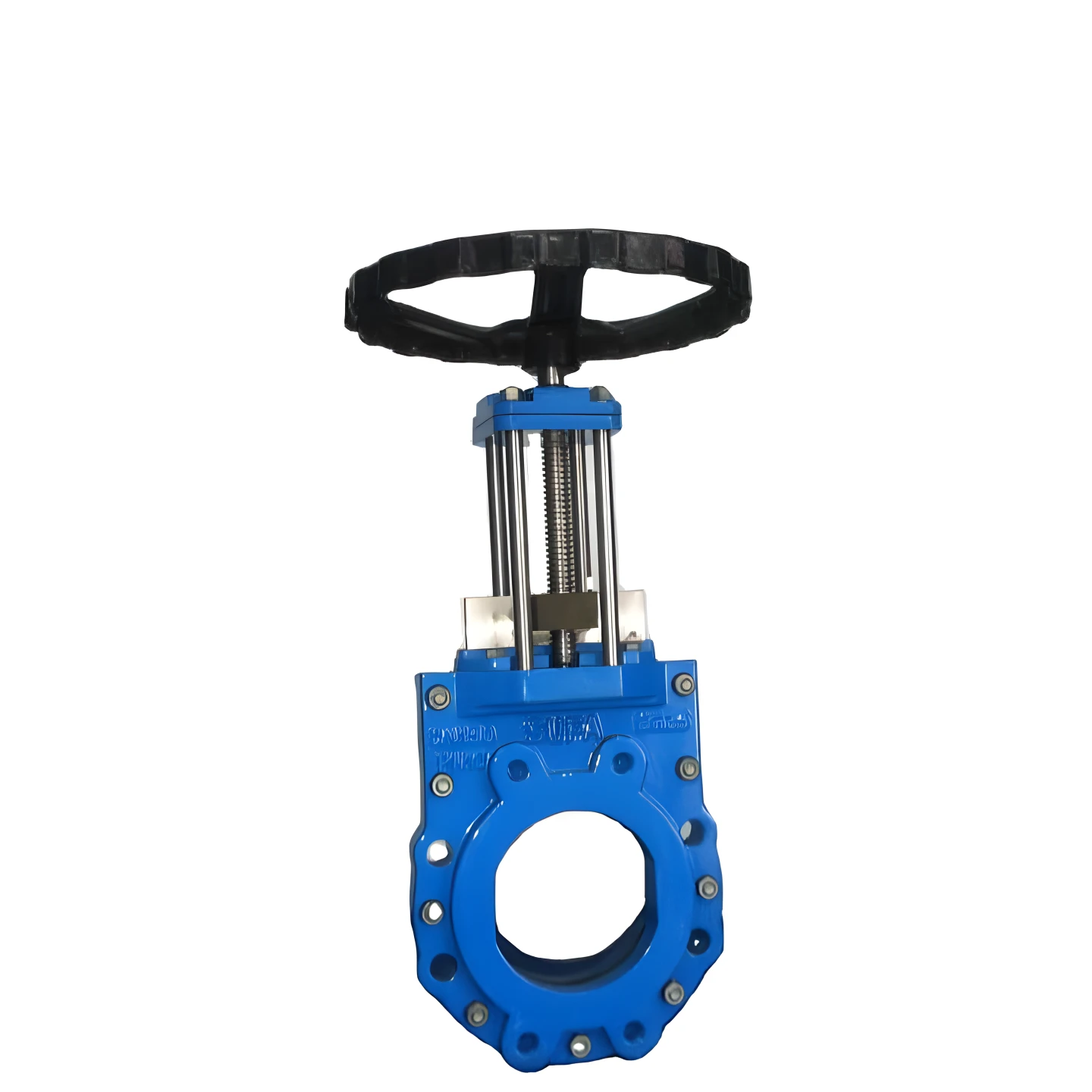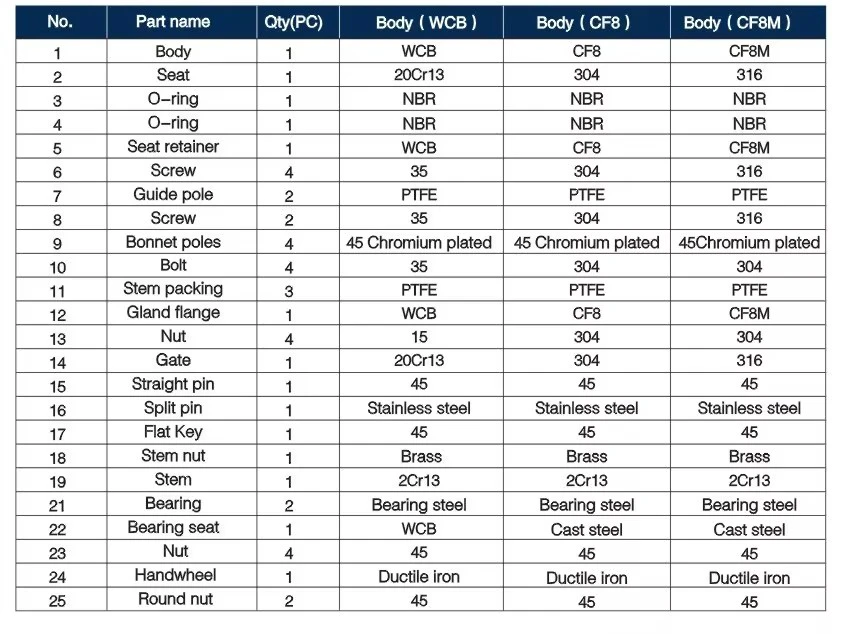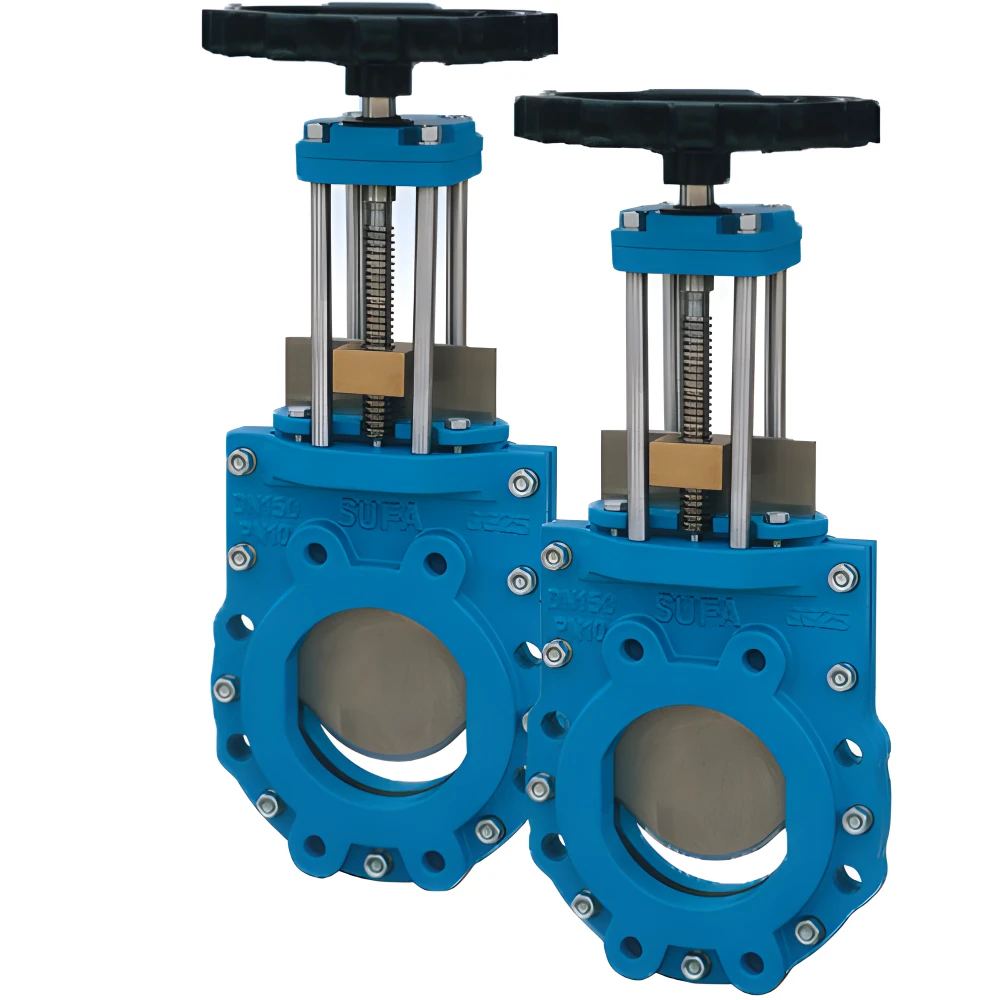| Application | General | Place of Origin | Shenzhen, China |
|---|---|---|---|
| Power | Manual | Customized support | OEM |
| Model Number | 250~300 DTZ73X-10H | Temperature of Media | Medium Temperature |
| Brand Name | SUFA | Media | Water |
| Standard or Nonstandard | Standard | Color | Blue |
| Suface coating | Suface coating | Suitable application | Water-supply system, drain system and heating system |
1. Introduction
The PN1.6MPa Grey Cast Iron Water Knife Type Gate Valve is designed for the efficient control of water flow in various industrial and municipal applications. This valve is ideal for handling clean water and other non-corrosive fluids, providing reliable performance and durability.
2. Features
- Material: Grey cast iron body for strength and durability.
- Design: Knife gate design for smooth operation and minimal clogging.
- Seal: Resilient seal ensuring tight closure and preventing leakage.
- Actuation: Available in manual, pneumatic, and electric operation.
- Connection: Flanged ends for easy installation and secure connection.
- Pressure Rating: PN1.6MPa for high-pressure applications.
3. Applications
- Water treatment plants.
- Municipal water supply systems.
- Irrigation systems.
- Industrial water handling.
- Power plants.
4. Technical Specifications
| Parameter | Specification |
|---|---|
| Valve Size | Various sizes available |
| Body Material | Grey Cast Iron |
| Gate Material | Stainless Steel (SS304/SS316) |
| Seal Material | Resilient (EPDM, NBR, etc.) |
| Pressure Rating | PN1.6MPa |
| Temperature Range | -10°C to 80°C (14°F to 176°F) |
| Connection Type | Flanged |
| Face-to-Face Dimension | According to ISO 5752 |
| Media | Clean water, non-corrosive fluids |
| Operating Pressure | 1.6 MPa |
| Actuation Options | Manual, Pneumatic, Electric |
| Leakage Rate | Zero leakage (resilient seal) |
| Testing Standard | API 598 |
5. Installation Instructions
- Preparation: Ensure the pipeline is clean and free of debris.
- Alignment: Align the valve with the pipeline flanges.
- Bolting: Secure the valve using appropriate bolts and nuts, ensuring even tightening.
- Actuator Connection: If using a pneumatic or electric actuator, connect it according to the manufacturer's instructions.
- Testing: Test the valve for proper operation and check for leaks.
6. Maintenance
- Regular Inspection: Periodically inspect the valve for signs of wear or damage.
- Seal Replacement: Replace the seals if leakage is detected.
- Stem Maintenance: Ensure the stem operates smoothly and is free from debris.
- Actuator Maintenance: Follow the actuator manufacturer's maintenance guidelines if applicable.
7. Safety Precautions
- Ensure the pneumatic or power supply is disconnected before performing any maintenance.
- Use appropriate personal protective equipment (PPE) when handling the valve.
- Follow all relevant safety standards and guidelines.
8. Troubleshooting
| Issue | Possible Cause | Solution |
|---|---|---|
| Valve does not open/close | Obstruction in the gate area | Inspect and clean the gate area |
| Leakage through the seal | Worn or damaged seal | Replace the seal |
| Actuator malfunction (if applicable) | Actuator failure | Inspect and repair/replace actuator |
Product Show















